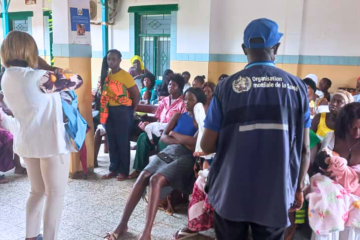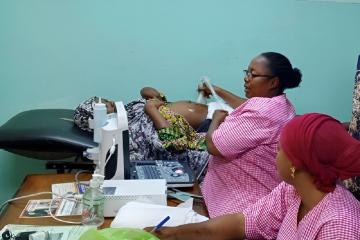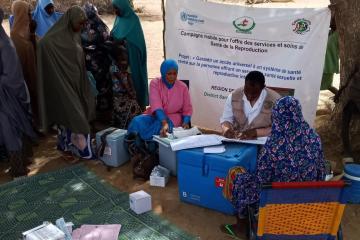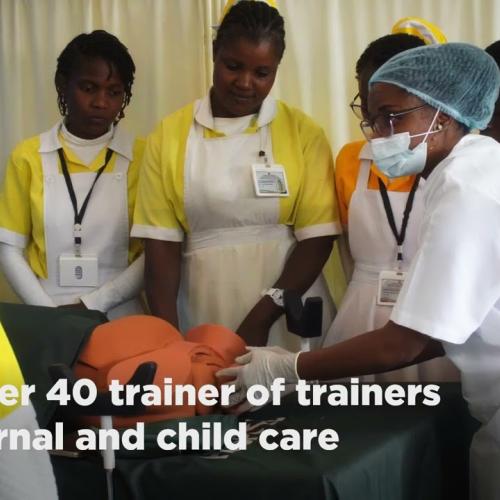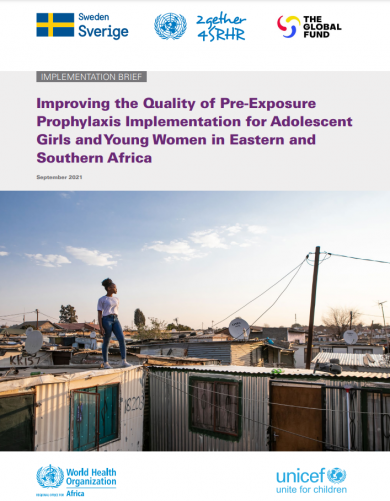Additional information
Saving mothers' lives
Infographic Part 1
Infographic Part 2
Infographic Part 3
Infographic Part 4
Infographic Part 5
Factsheet
Key Facts
- Every day, approximately 830 women die from preventable causes related to pregnancy and childbirth.
- 99% of all maternal deaths occur in developing countries.
- Maternal mortality is higher in women living in rural areas and among poorer communities.
- Young adolescents face a higher risk of complications and death as a result of pregnancy than other women.
- Skilled care before, during and after childbirth can save the lives of women and newborn babies.
- Between 1990 and 2015, maternal mortality worldwide dropped by about 44%.
- Between 2016 and 2030, as part of the Sustainable Development Goals, the target is to reduce the global maternal mortality ratio to less than 70 per 100 000 live births.
Maternal mortality is unacceptably high. About 830 women die from pregnancy- or childbirth-related complications around the world every day. It was estimated that in 2015, roughly 303 000 women died during and following pregnancy and childbirth. Almost all of these deaths occurred in low-resource settings, and most could have been prevented.1
In sub-Saharan Africa, a number of countries halved their levels of maternal mortality since 1990. In other regions, including Asia and North Africa, even greater headway was made. Between 1990 and 2015, the global maternal mortality ratio (the number of maternal deaths per 100 000 live births) declined by only 2.3% per year between 1990 and 2015. However, increased rates of accelerated decline in maternal mortality were observed from 2000 onwards. In some countries, annual declines in maternal mortality between 2000–2010 were above 5.5%.
Seeing that it is possible to accelerate the decline, countries have now united behind a new target to reduce maternal mortality even further. One target under Sustainable Development Goal 3 is to reduce the global maternal mortality ratio to less than 70 per 100 000 births, with no country having a maternal mortality rate of more than twice the global average.
The high number of maternal deaths in some areas of the world reflects inequities in access to health services, and highlights the gap between rich and poor. Almost all maternal deaths (99%) occur in developing countries. More than half of these deaths occur in sub-Saharan Africa and almost one third occur in South Asia. More than half of maternal deaths occur in fragile and humanitarian settings.
The maternal mortality ratio in developing countries in 2015 is 239 per 100 000 live births versus 12 per 100 000 live births in developed countries. There are large disparities between countries, but also within countries, and between women with high and low income and those women living in rural versus urban areas.
The risk of maternal mortality is highest for adolescent girls under 15 years old and complications in pregnancy and childbirth is a leading cause of death among adolescent girls in developing countries.2, 3
Women in developing countries have, on average, many more pregnancies than women in developed countries, and their lifetime risk of death due to pregnancy is higher. A woman’s lifetime risk of maternal death – the probability that a 15 year old woman will eventually die from a maternal cause – is 1 in 4900 in developed countries, versus 1 in 180 in developing countries. In countries designated as fragile states, the risk is 1 in 54; showing the consequences from breakdowns in health systems.
Women die as a result of complications during and following pregnancy and childbirth. Most of these complications develop during pregnancy and most are preventable or treatable. Other complications may exist before pregnancy but are worsened during pregnancy, especially if not managed as part of the woman’s care. The major complications that account for nearly 75% of all maternal deaths are:4
- severe bleeding (mostly bleeding after childbirth)
- infections (usually after childbirth)
- high blood pressure during pregnancy (pre-eclampsia and eclampsia)
- complications from delivery
- unsafe abortion.
The remainder are caused by or associated with diseases such as malaria, and AIDS during pregnancy.
For more information:
WHO African Region's Countries Abortion Health Profiles
Global Abortion Policies Database
Family Planning in the African Region
Most maternal deaths are preventable, as the health-care solutions to prevent or manage complications are well known. All women need access to antenatal care in pregnancy, skilled care during childbirth, and care and support in the weeks after childbirth. Maternal health and newborn health are closely linked. It was estimated that approximately 2.7 million newborn babies died in 20155, and an additional 2.6 million are stillborn6. It is particularly important that all births are attended by skilled health professionals, as timely management and treatment can make the difference between life and death for both the mother and the baby.
Severe bleeding after birth can kill a healthy woman within hours if she is unattended. Injecting oxytocin immediately after childbirth effectively reduces the risk of bleeding.
Infection after childbirth can be eliminated if good hygiene is practiced and if early signs of infection are recognized and treated in a timely manner.
Pre-eclampsia should be detected and appropriately managed before the onset of convulsions (eclampsia) and other life-threatening complications. Administering drugs such as magnesium sulfate for pre-eclampsia can lower a woman’s risk of developing eclampsia.
To avoid maternal deaths, it is also vital to prevent unwanted and too-early pregnancies. All women, including adolescents, need access to contraception, safe abortion services to the full extent of the law, and quality post-abortion care.
Poor women in remote areas are the least likely to receive adequate health care. This is especially true for regions with low numbers of skilled health workers, such as sub-Saharan Africa and South Asia. Globally in 2015, births in the richest 20 per cent of households were more than twice as likely to be attended by skilled health personnel as those in the poorest 20 per cent of households (89 per cent versus 43 per cent). This means that millions of births are not assisted by a midwife, a doctor or a trained nurse.
In high-income countries, virtually all women have at least four antenatal care visits, are attended by a skilled health worker during childbirth and receive postpartum care. In 2015, only 40% of all pregnant women in low-income countries had the recommended antenatal care visits.
Other factors that prevent women from receiving or seeking care during pregnancy and childbirth are:
- poverty
- distance
- lack of information
- inadequate services
- cultural practices.
To improve maternal health, barriers that limit access to quality maternal health services must be identified and addressed at all levels of the health system.
Improving maternal health is one of WHO’s key priorities. WHO works to contribute to the reduction of maternal mortality by increasing research evidence, providing evidence-based clinical and programmatic guidance, setting global standards, and providing technical support to Member States.
In addition, WHO advocates for more affordable and effective treatments, designs training materials and guidelines for health workers, and supports countries to implement policies and programmes and monitor progress.
During the United Nations General Assembly 2015, in New York, UN Secretary-General Ban Ki-moon launched the Global Strategy for Women's, Children's and Adolescents' Health, 2016-20307. The Strategy is a road map for the post-2015 agenda as described by the Sustainable Development Goals and seeks to end all preventable deaths of women, children and adolescents and create an environment in which these groups not only survive, but thrive, and see their environments, health and wellbeing transformed.
As part of the Global Strategy and goal of Ending Preventable Maternal Mortality, WHO is working with partners towards:
- addressing inequalities in access to and quality of reproductive, maternal, and newborn health care services;
- ensuring universal health coverage for comprehensive reproductive, maternal, and newborn health care;
- addressing all causes of maternal mortality, reproductive and maternal morbidities, and related disabilities; and
- strengthening health systems to collect high quality data in order to respond to the needs and priorities of women and girls; and
- ensuring accountability in order to improve quality of care and equity.



